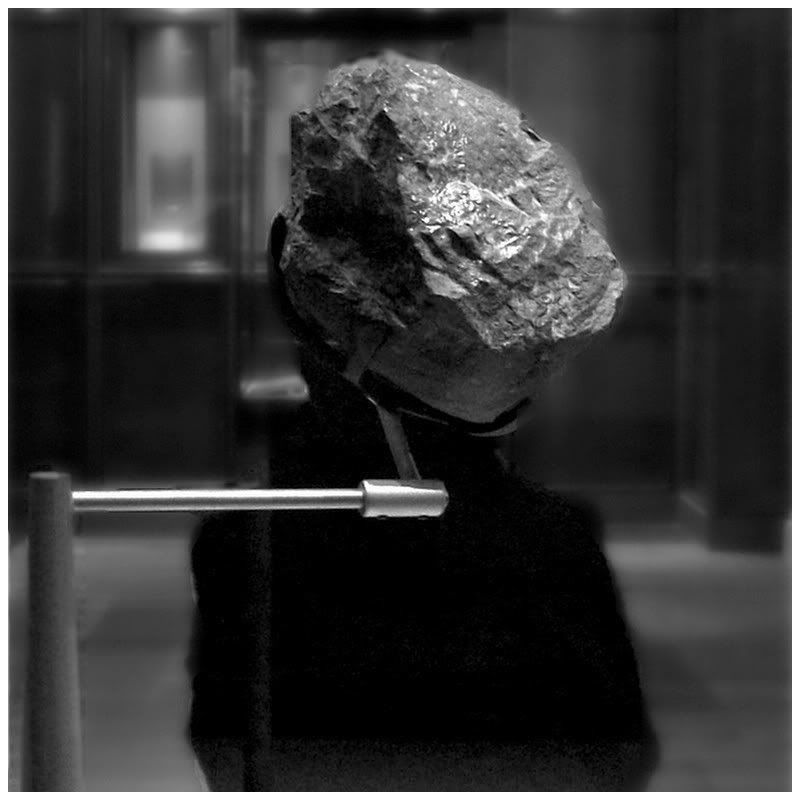 Kodak M853, 1/8, f2.8, 0.0ev, no-flash, 37mm, ISO 200
Kodak M853, 1/8, f2.8, 0.0ev, no-flash, 37mm, ISO 200 Isang milyon at walong-daang libong taon. Iyan ang edad ng bato na nakikita sa larawan. Ito ay kuha ko sa loob ng British Museum sa London, at ipinagmamalaki ng mga tagapangasiwa doon na ito ang pinakamatanda at pinakalumang bato sa lahat ng bagay na matatagpuan doon. Noong unang panahon na hindi pa uso ang kutsilyo sa paghihiwa ng mga pagkain, ang mga unang tao ay gumagamit ng bato tulad nito bilang matalas na instrumentong panghiwa. Ang batong ito ay galing sa bulkan at "basalt" ang tawag dito. Nakuha ito Olduvai Gorge, sa Tanzania noong 1934, at ngayon nga ay matatagpuan sa British Museum.
Isang milyon at walong-daang libong taon. Iyan ang edad ng bato na nakikita sa larawan. Ito ay kuha ko sa loob ng British Museum sa London, at ipinagmamalaki ng mga tagapangasiwa doon na ito ang pinakamatanda at pinakalumang bato sa lahat ng bagay na matatagpuan doon. Noong unang panahon na hindi pa uso ang kutsilyo sa paghihiwa ng mga pagkain, ang mga unang tao ay gumagamit ng bato tulad nito bilang matalas na instrumentong panghiwa. Ang batong ito ay galing sa bulkan at "basalt" ang tawag dito. Nakuha ito Olduvai Gorge, sa Tanzania noong 1934, at ngayon nga ay matatagpuan sa British Museum.1.8 million years old. That is how old the object above is. This was taken inside in the British Museum in London, and it is hailed as the oldest object inside the museum. In the beginning when knives were not yet invented, our ancestors used volcanic rocks called basalt like the one above, as chopping tools. This particular volcanic knife-stone was found in the Olduvai Gorge, in Tanzania, in 1934, and today, it is proudly displayed in London.
1.8 million d'années. C'est combien vieux l'objet ci-dessus est. Ceci a été pris à l'intérieur dans British Museum à Londres, et il est grêlé comme objet le plus ancien à l'intérieur du musée. Dans le commencement quand des couteaux n'ont pas été encore inventé, nos ancêtres ont employé les roches volcaniques appelées le basalte comme celui ci-dessus, en tant que hachage des outils. Cette couteau-pierre volcanique particulière a été trouvée en gorge d'Olduvai, en Tanzanie, en 1934, et aujourd'hui, elle est fièrement montrée à Londres.





